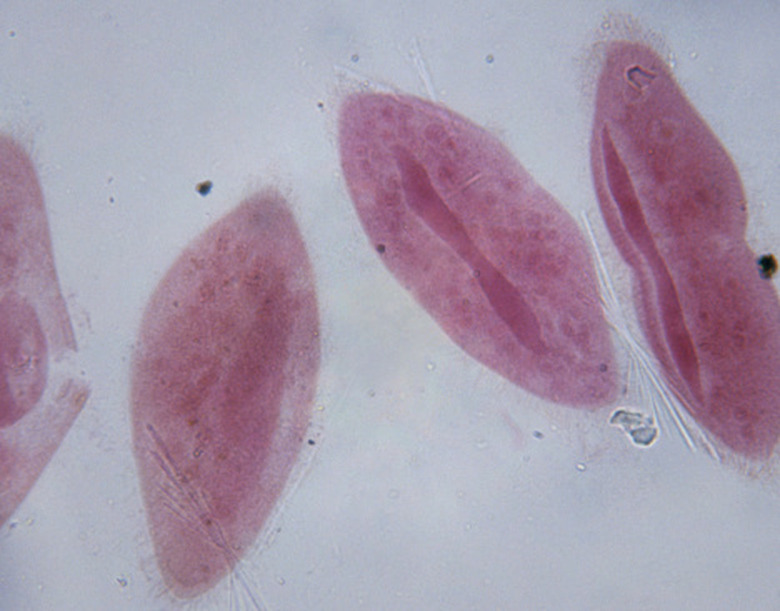What Are The Characteristics Of The Protista Kingdom?
Scientists sometimes call kingdom Protista the "catch-all kingdom" because it is made up of organisms that don't really belong anywhere else. The organisms belong to Protista by virtue of not being animals, plants or fungi. These organisms are classified within kingdom Protista based on which of the other kingdoms to which they are most similar, resulting in taxonomic groupings for animal-like, plantlike and funguslike protists.
Commonalities Among Protists
Commonalities Among Protists
All protists are eukaryotes, meaning each of their cells have a nucleus; their cells also contain mitochondria so that they can perform aerobic respiration. Most protists are unicellular, with the exception of some multicellular algal protists. Their small size allows protists to use diffusion to exchange gases or release waste products. Protists are aquatic organisms, though they can survive in moist environments, such as soil or the human body. Many protists have flagella or cilia–hairlike appendages that propel them through water; some use pseudopodia, or false feet, to move.
Animal-like Protists
Animal-like Protists
Like animals, heterotrophic protists consume other organisms to obtain their energy. These protists are called "protozoa," which means "first animal." Protozoans eat through a process called "phagocytosis," in which they surround their food with their cell membrane and trap it inside a vacuole. Amoebae and paramecia are both heterotrophic protists, as is plasmodium, the parasitic protist that causes malaria.
Plantlike Protists
Plantlike Protists
Autotrophic protists–those that, like plants, use photosynthesis to make their own food–are called algae. These include red, brown and green algae, as well as diatoms, dinoflagellates and euglena. Some algae have complex life cycles; plant life is thought to have evolved from green algae. Unlike plants, however, algae have only thin blades, as they have not evolved the vascular structures that allow plants to conduct nutrients and water throughout their system.
Funguslike Protists
Funguslike Protists
Funguslike protists are referred to as "slime molds," which are sometimes bright yellow or orange. They don't obtain their energy heterotrophically or autotrophically; instead, like fungi, slime molds absorb nutrients from their surroundings. Slime molds live in decayed wood, where they form multinucleate masses of cytoplasm that can move using pseudopodia. They ingest bacteria and other organisms using phagocytosis.
Cite This Article
MLA
Gambrel, Ellie. "What Are The Characteristics Of The Protista Kingdom?" sciencing.com, https://www.sciencing.com/characteristics-protista-kingdom-8576710/. 24 April 2017.
APA
Gambrel, Ellie. (2017, April 24). What Are The Characteristics Of The Protista Kingdom?. sciencing.com. Retrieved from https://www.sciencing.com/characteristics-protista-kingdom-8576710/
Chicago
Gambrel, Ellie. What Are The Characteristics Of The Protista Kingdom? last modified March 24, 2022. https://www.sciencing.com/characteristics-protista-kingdom-8576710/
